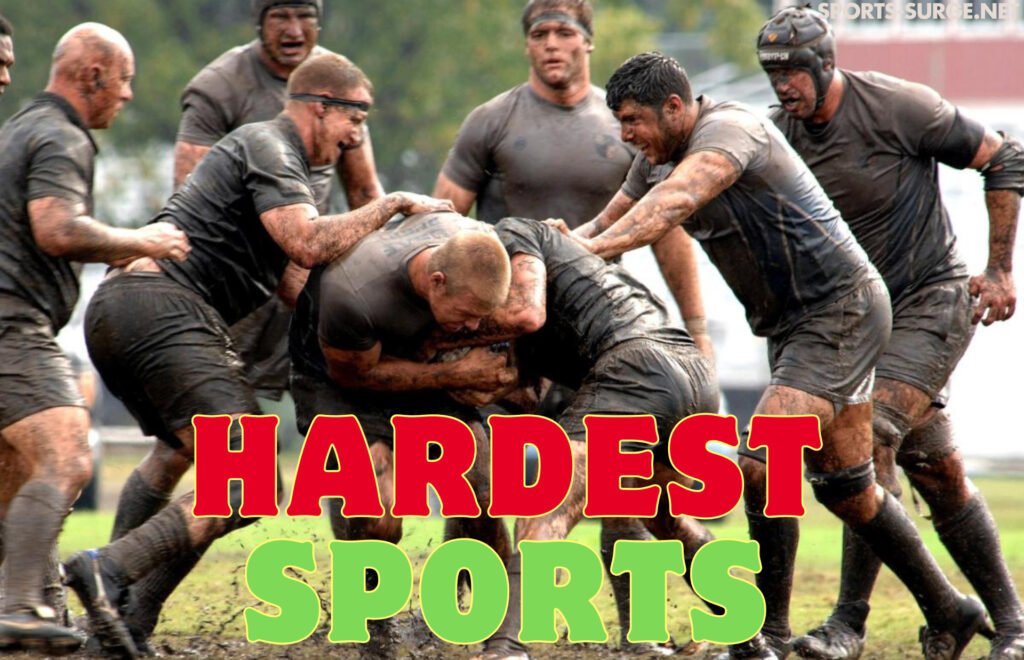Sports have always been a reflection of human passion, resilience, and determination. Among the vast array of athletic disciplines, some stand out for their sheer difficulty. These sports demand not just physical prowess but also mental fortitude, strategic thinking, and an unwavering commitment to excellence. In this article, we delve deep into the world of the hardest sports, analyzing the unique challenges they present and the qualities required to excel in them.
Table of Contents
ToggleWhat Defines a “Hard” Sport?
Before diving into specifics, it’s essential to understand the factors that make a sport challenging. A sport’s difficulty can be assessed through various parameters:
- Physical Demand: Intensity of physical exertion, strength, and endurance.
- Mental Pressure: Stress, focus, and decision-making under pressure.
- Skill Level: Technical expertise and precision required.
- Risk Factor: Potential for injury and danger involved.
- Training Intensity: Hours of practice, discipline, and commitment required.
- Competition: Level of global participation and competitiveness.
Let’s explore the hardest sports in the world based on these parameters.
Boxing

Why It’s Hard:
Boxing is often touted as the hardest sport, and for good reason. It’s a brutal combination of physical endurance, strategic thinking, and mental toughness. Boxers endure grueling training regimes, which include sparring, strength conditioning, and intense cardio. During matches, they must balance offensive and defensive strategies while enduring blows that can cause severe injuries.
Key Challenges:
- High risk of concussions and injuries.
- Requires peak physical fitness and quick reflexes.
- Constant mental calculations to outwit the opponent.
Gymnastics
Why It’s Hard:
Gymnastics demands unparalleled flexibility, strength, and precision. Athletes perform routines that combine acrobatics, balance, and artistry. The margin for error is minuscule, as a single misstep can result in severe injury or a loss of points.
Key Challenges:
- Extreme physical strain on muscles and joints.
- High level of skill and years of training required.
- Psychological pressure to execute flawless performances.
Ironman Triathlon
Why It’s Hard:
The Ironman Triathlon is a true test of endurance, combining swimming (2.4 miles), cycling (112 miles), and running (26.2 miles) in one event. Completing this race requires immense physical and mental resilience.
Key Challenges:
- Extended periods of physical exertion.
- Managing energy levels and hydration over long distances.
- Mental strength to push through fatigue and pain.
Mixed Martial Arts (MMA)

Why It’s Hard:
MMA combines techniques from various combat sports like boxing, wrestling, and Brazilian Jiu-Jitsu. Fighters must master multiple disciplines while maintaining peak physical fitness.
Key Challenges:
- High risk of injuries, including broken bones and concussions.
- Requires mastery of diverse fighting styles.
- Intense physical and mental preparation.
Ice Hockey
Why It’s Hard:
Ice hockey is one of the fastest sports, demanding players to skate at high speeds while controlling a puck and anticipating opponents’ moves. The physicality of the game adds another layer of difficulty.
Key Challenges:
- Requires excellent skating skills and coordination.
- Physical collisions and injuries are common.
- Fast-paced decision-making and stamina are critical.
Rugby

Why It’s Hard:
Rugby is a high-impact sport requiring immense physical strength, agility, and teamwork. Players endure intense physical confrontations while maintaining strategic gameplay.
Key Challenges:
- High risk of injuries due to physical tackles.
- Requires both strength and speed.
- Demands strategic thinking and teamwork.
Tennis
Why It’s Hard:
Tennis players require exceptional agility, endurance, and mental focus to succeed. Matches can last for hours, pushing athletes to their physical and mental limits.
Key Challenges:
- High-intensity gameplay over extended periods.
- Requires precise technique and strategic thinking.
- Mental resilience to handle pressure in critical moments.
Water Polo
Why It’s Hard:
Water polo is often overlooked but is one of the most physically demanding sports. Players must swim continuously while strategizing and defending against opponents.
Key Challenges:
- Requires swimming endurance and strength.
- Constant physical battles in the water.
- Complex team strategies and quick decision-making.
Climbing (Sport Climbing and Mountaineering)
Why It’s Hard:
Climbing tests physical strength, endurance, and mental focus. From competitive sport climbing to high-altitude mountaineering, each variation presents unique challenges.
Key Challenges:
- Requires immense upper body strength and grip.
- Mental focus to navigate complex routes.
- High risk of injuries and, in mountaineering, life-threatening conditions.
Soccer (Football)
Why It’s Hard:
Soccer’s global popularity makes it one of the most competitive sports. Players need to be fit enough to run for 90 minutes while maintaining precise ball control and strategic awareness.
Key Challenges:
- Intense physical demands with constant movement.
- Requires exceptional teamwork and communication.
- Mental pressure in high-stakes games.
Honorable Mentions
Swimming: Demands endurance, technique, and speed across various strokes.
Skiing: Combines speed, balance, and control on challenging terrains.
American Football: Requires strength, agility, and split-second decision-making.
Motorsports: High-speed racing tests reflexes, focus, and physical endurance under G-forces.
Conclusion
The hardest sports in the world push athletes to their limits, combining physical, mental, and emotional challenges. While each sport is unique, they all share a common thread of requiring exceptional dedication and perseverance. Whether it’s the grit of a boxer, the finesse of a gymnast, or the endurance of a triathlete, these athletes inspire us to reach for greatness in the face of adversity.
As we celebrate these demanding disciplines, it’s clear that sports are more than just games—they’re a testament to human potential and the relentless pursuit of excellence.
FAQs about Hardest Sports
What is considered the hardest sport in the world?
Determining the hardest sport is subjective and depends on various criteria, including physical demands, mental toughness, skill requirements, and risk factors. Sports commonly cited as the most challenging include boxing, gymnastics, mixed martial arts (MMA), and ice hockey.
Why is boxing often regarded as the most difficult sport?
Boxing is frequently considered the hardest sport due to its combination of physical endurance, strength, agility, and mental resilience. Boxers undergo rigorous training regimes and face high risks of injury, requiring exceptional dedication and toughness.
What factors contribute to a sport being labeled as ‘hard’?
- Several factors contribute to a sport’s difficulty, including:
- Physical Demands: Endurance, strength, speed, and flexibility required.
- Mental Toughness: Focus, strategic thinking, and psychological resilience.
- Skill Level: Technical proficiency and precision needed.
- Risk of Injury: Potential for acute or chronic injuries.
- Training Intensity: Time and effort required for preparation.
- Competitiveness: Level of competition and skill among participants.
How do mental challenges compare across different hard sports?
Mental challenges vary by sport but are universally significant. For instance, gymnastics requires intense concentration and overcoming fear during complex routines, while sports like MMA demand strategic thinking and mental resilience to handle physical confrontation.
Which sport has the highest risk of injury?
Sports with high physical contact or demanding physical feats tend to have higher injury rates. According to data from the International Olympic Committee, boxing has one of the highest injury rates among Olympic sports.
Is it harder to go professional in certain sports compared to others?
Yes, the difficulty of turning professional varies by sport. Factors include the sport’s popularity, the number of available professional opportunities, and the level of competition. For example, sports like boxing and MMA are considered particularly challenging to go pro due to the high skill level and physical demands required.

